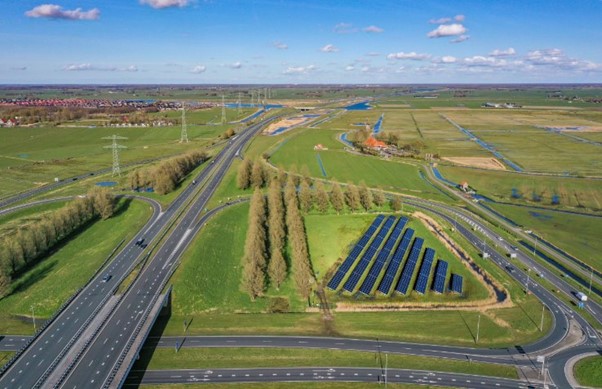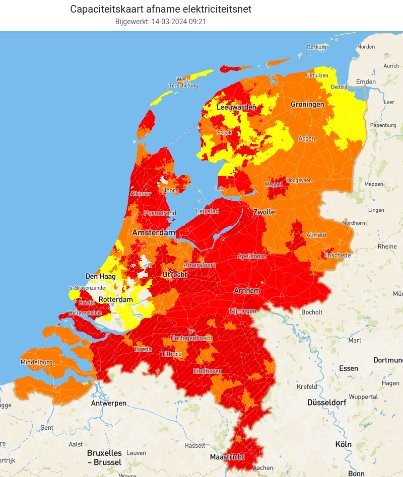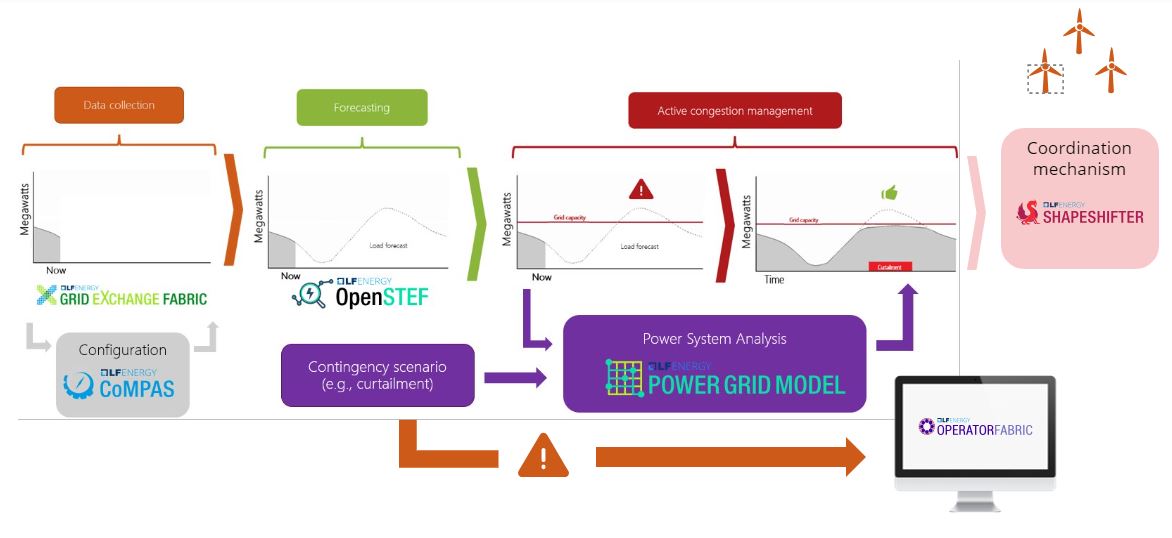Alliander: Capacity Management with Open Source
Dutch DSO Alliander has a long history of digitalisation projects. Faced with limitations to grid capacity, Alliander took a holistic approach to increase effective capacity. This integral approach is being called 'Capacity Management'. Digitalisation was fundamental to this effort and therefore full digitalisation and automation was taken as a starting point for new processes, rather than incrementally digitising existing processes. Without readily available software solutions digitalisation was achieved through in-house agile software development.


Open Source collaboration projects were started for key digital capabilities. The Open Source license allowed other organisations to reuse the software, modify it for their own applications and contribute their improvements. Under independent governance of the Linux Foundation Energy these key software projects are continiously improving in quality and applicability. The Open Source collaboration allowed Alliander to get better solutions through different points of view, share precious time of subject matter experts and share software maintenance burden. Alliander also joined other Open Source projects that fit the use-cases.
In large parts of the grid now the maximum capacity has been reached for traditional contracts. Congestion management is used to mitigate local capacity issues through the market. Despite capacity issues some new customer can be connected through new contracts that incorporate flexibility. Alliander keeps expanding the quality of the digital solutions and the variety of solutions that can be provides.

Introduction: the need for capacity management
Alliander is a group of companies, containing Dutch DSO Alliander. Alliander distributes gas and electricity for about a third of the Netherlands via 5.8 million connections.
Digitalisation is key for the current and future operations at Alliander. In the Netherlands, the energy transition if in full swing and large parts of the grid are used to their maximum capacity. This can be observed on the national capacity map which is turning red and orange to indicate that no additional connection or upgrade of an existing connection is possible. Work is under way to increase grid capacity for the medium to long term. For the short term, an integral approach of capacity management is the main method to free up capacity and connect customers.
Capacity management at Alliander is an integral approach of optimizing use of grid capacity. It encompasses lowering peak loads (congestion management), shifting peak loads and offering remaining capacity through dynamic contracts.
Continued measurement, forecasting and analysis help optimize capacity by minimizing intervention and maximising capacity use. A high level of digitalisation is required of both the grid operator and of participating parties that help mitigate congestion or make use of dynamic contracts.
Challenges and framework
Accenture digitalised DSO framework
Capacity Management at Alliander belongs mainly to the Operate activity category and is in the Leading maturity level if not already in the North Star level. From the outset the goal and leading principle was to be fully automated and integrated. The desired level of automation and integration was achieved during the implementation, with temporary solutions or work-arounds acting as placeholders while integration was being developed. In this regard the project grew in scope and features rather than in level of digitalisation.
Specific challenged addressed
- New roles, processes and contracts for integral capacity management
- Data quality and integrity
- Set new technical baseline through Open Source collaboration and development of Open Standards
Solution overview
Technological definition and solution description
Capacity Management is achieved by providing a Market Coordination Platform and defining a Network Code for Market to allow Local Energy Trading to mitigate congestion. This trading occurs over an open standard protocol named Shapeshifter to lower the barrier to adoption. Local congestion is then resolved using the flexibility in Flexible Generation, Electric Vehicle Demand Response, Industrial Demand Response for Congestion Management. Some flexibility is unlocked via aggregators that Aggregate Small-Scale Demand.
Fundamental to prediction congestion is predicting network load. This is done using short term energy forecasting (Enhanced Load Forecasting, Enhanced RES Infeed Forecasting – Wind) using an explainable machine learning model (Artificial Intelligence). This model is developed as Open Source Software named OpenSTEF together with other parties (e.g. RTE, RWTH Aachen, Sigholm) to increase performance and expand system integration. Live measurements, historic measurements and weather forecasts are used as input for the energy forecasts.
Power Flow Analysis on the forecasts checks for congestion. This Power Flow Analysis software named Power Grid Model is optimized for speed and is developed as open source to increase adoption and share ongoing development.
Work is under way to develop Dynamic Line Rating (DLR)-like models for the cable infrastructure and total asset infrastructure (e.g. transformers) to help free up even more grid capacity while staying within limits.
The key reusable components have been released as Open Source Software and Open Standards to collaborate with other organisations in the energy domain to overcome digitalisation challenges and getting more incremental innovation with the finite budget you have. The total solution encompasses other software, both commercial of the shelf software and bespoke software developed in-house.
Terms in bold face are defined in the ENTSO-E Technopedia https://www.entsoe.eu/Technopedia/

Solution overview: This diagram depicts the generic process of capacity management and its main Open Source components.
Technological components:
- Real time data collection in substations. Open Source Grid eXchange Fabric (GXF) software is used to handle communications.
- Database containing historic time series data as basis for many digital processes.
- Central substation PACS configuration using Open Source CoMPAS and OpenSCD software. Intended to be used for dynamic protection in the future.
- Short term energy forecasting using Open Source OpenSTEF software.
- Power System Analysis and State Estimation using Open Source Power Grid Model software to evaluate capacity issues and solutions.
- Operator HMI via open source OperatorFabric software to enable interaction with system operators where necessary.
- Market coordination through GOPACS platform according to the Open Standard Shapeshifter protocol and using Open Source Shapeshifter libraries.
Implementation details
Phases:
- Start of separate division System Operations with a focus on flexibility and system safety.
- In the absence of off-the-shelf software capable of meeting all our functional requirements, we decided to develop our own software solution where off-the-shelf software options failed to meet our requirements. An initial architecture as the starting point for building components and maturity capabilities in an agile approach. Processes became clear over time.
- Open Source collaborations were started on key software capabilities to further improve these projects under independent governance of the Linux Foundation Energy and in collaboration with others.
- With most fundamental capabilities in place new contract types with flexibility constraints could be offered.
- Capacity management is growing in number of contracts and amount of capacity created through flexibility.
- Additional capabilities are added by adding low voltage networks and adding dynamic cable rating models.
Stakeholders:
- Distribution System Operator, Transmission System Operator, Aggregators, Customers, Knowledge institution
Challenges encountered:
- Deploying a large number of new measurement points within the electricity grid is a complex endeavor.
- Mitigating data quality challenges takes a lot of effort.
- Building Open Source communities takes time.
User Roles:
- System operator
- Customers
- Certified flexibility providers
Key performance indicators (KPIs)
System capability:
- We have a system in place allowing us to forecast and assess the safety of the grid for the medium voltage. We are now working on extending this capability to the low voltage.
- We can automatically activate customer flexibility with contracted customers & certified flexibility providers (GOAPCS).
Customer flexibility:
- We are actively offering customers requesting capacity new contract types with flexibility by using time and voltage-based constraints. We are working on non-firm capacity contracts.
- We actively manage 100 medium voltage customer contracts, we will scale up to 1300 by the end of the year. We expect more than 2500 in 2025.
- We bring our congestion needs to the market through the Dutch marketplace (GOPACS).
- We are supporting flexibility in the Low Voltage with public EV charging points. This is being scaled nationally as municipalities continue to increase charging point density.
Open Source collaboration:
- We are collaborating with other organisations on 9 key open source energy sector projects. New projects are under development for capabilities without existing open source projects.
Lessons learned and best practices
Key takeaways:
- Digitalisation can be achieved in a rapid and integral approach, compared to a gradual digitalisation of existing processes.
- Where off-the-shelf software options failed to meet the requirements, developing software in-house presents a viable alternative with more options for customization. It enables experimentation and facilitates smoother integration.
- Open Source Software and Open Standards enable external collaboration with low friction.
Best practices:
- Find common problems: Companies are often going “in the same direction and facing the same problems.” Work together to solve them.
- Power of the crowd: By accepting external viewpoints that come through open collaboration, the risk of taking the wrong path is reduced.
- Set up an Open Source Program Office (OSPO) to coordinate the open source collaboration with internal and external stakeholders.
Scalability:
- The organisation has a working process of developing digital capabilities to meet the challenges, so adding new capabilities is a matter of time.
- Open Source collaboration allows large scale collaboration and sharing of precious experts in a time where it is hard to recruit them.
Conclusion
Summary:
The ambitious mindset of full automation and taking ownership of the necessary software has payed off. It has created a strong foundation in both the organisation and the technology. A foundation on which additional digital capabilities can be built. Open Source collaboration provides the support and collaboration we seek on our journey without compromising our agility.
Actionable insights:
- Faced with limitations to grid capacity, DSO’s should increase their investments in Capacity management to increase the effective grid capacity.
- More DSO’s and energy industry stakeholders should engage in open-sourcing current projects and tools, contributing to open-source communities, and collaboratively identifying which components of the ecosystem's software stacks can be made open source. In other sectors this approach has provided industry-wide benefits, so it promises widespread benefits across the entire energy industry too.
- Regulations should stimulate DSO’s and energy industry stakeholders to adopt collaborative practices, allowing them to leverage smart technologies, flexible grid configurations and common building blocks effectively.
- Regulatory frameworks should encourage and incentivize more open-source research and development efforts.

Supporting materials
- Alliander invests record-breaking amount in energy networks, but power grid congestion is set to remain for at least 10 years
- Alliander and open source
- How Two Utilities Embraced Open Source to Speed Modernization of the Electric Grid
- Case study: OpenSTEF Delivers Operational Forecasts at Hundreds of Grid Locations for Alliander
- Case study: Alliander’s Delvi Project Leverages LF Energy Power Grid Model to Direct Overhaul of Low Voltage Grid
- LF Energy Annual Report 2023
Find out more on our activities at https://www.alliander.com/en/
Visit the dedicated Open Source page for more details on that topic https://www.alliander.com/en/open-source/